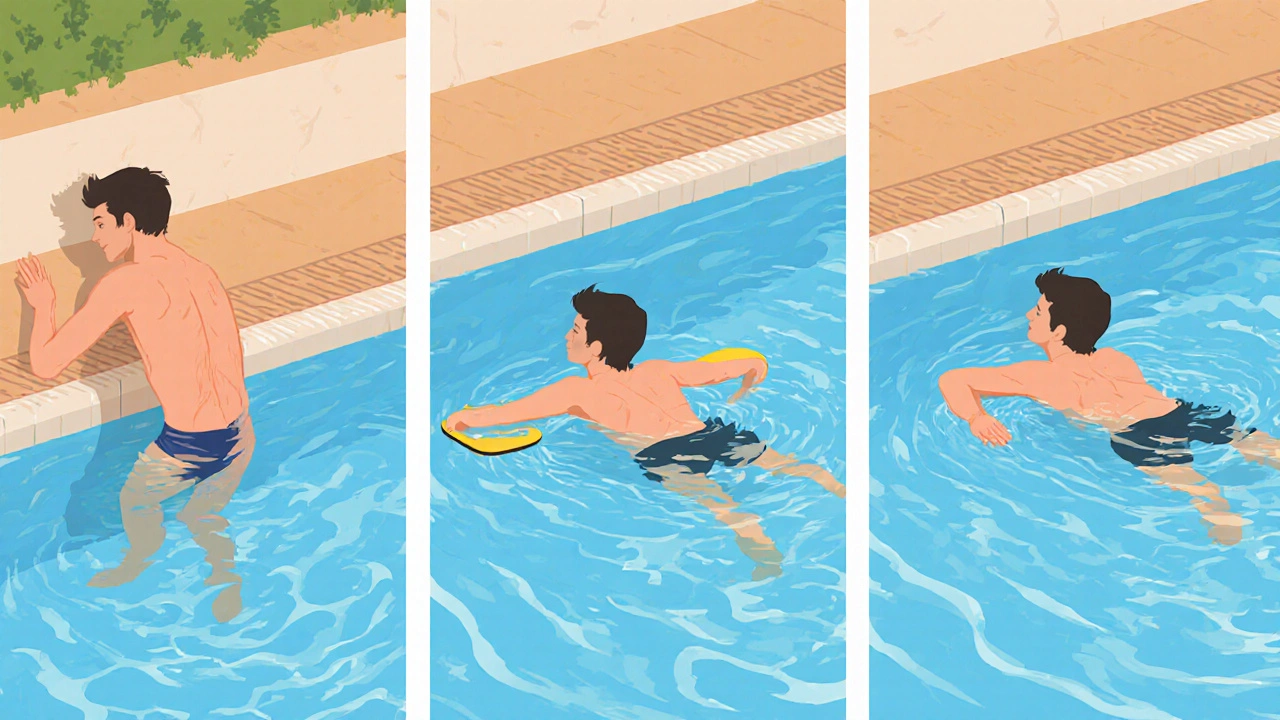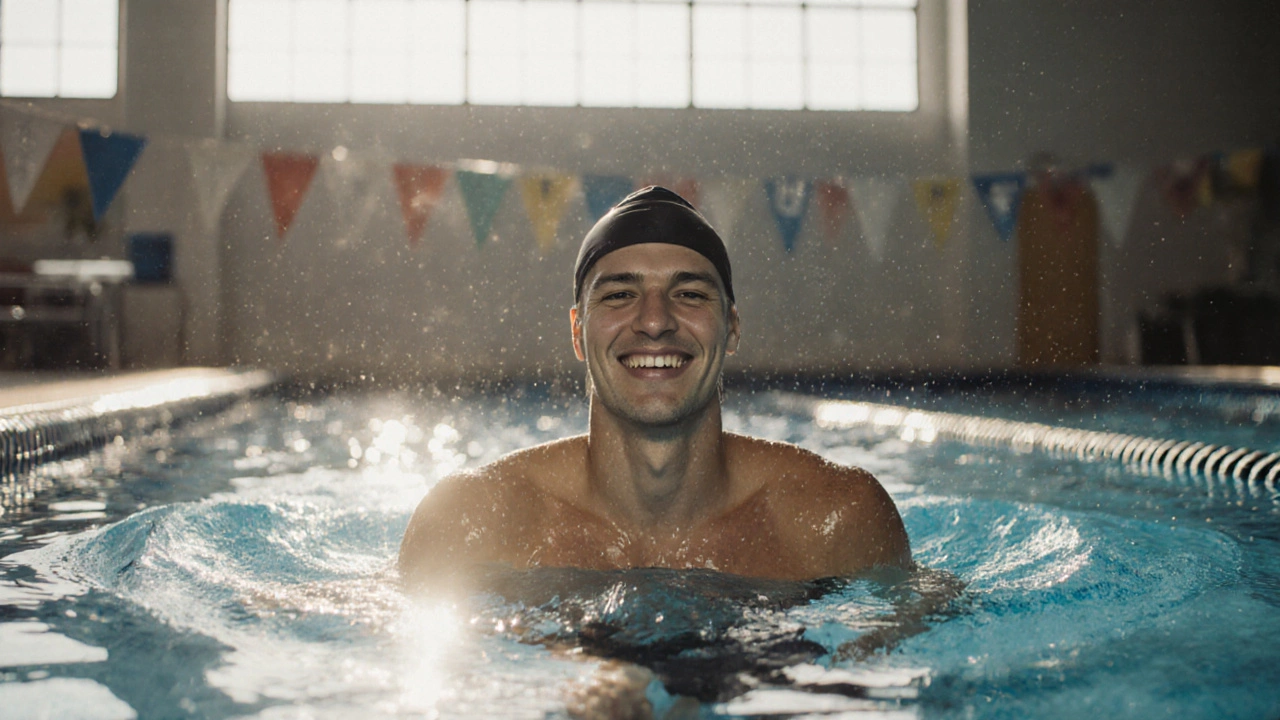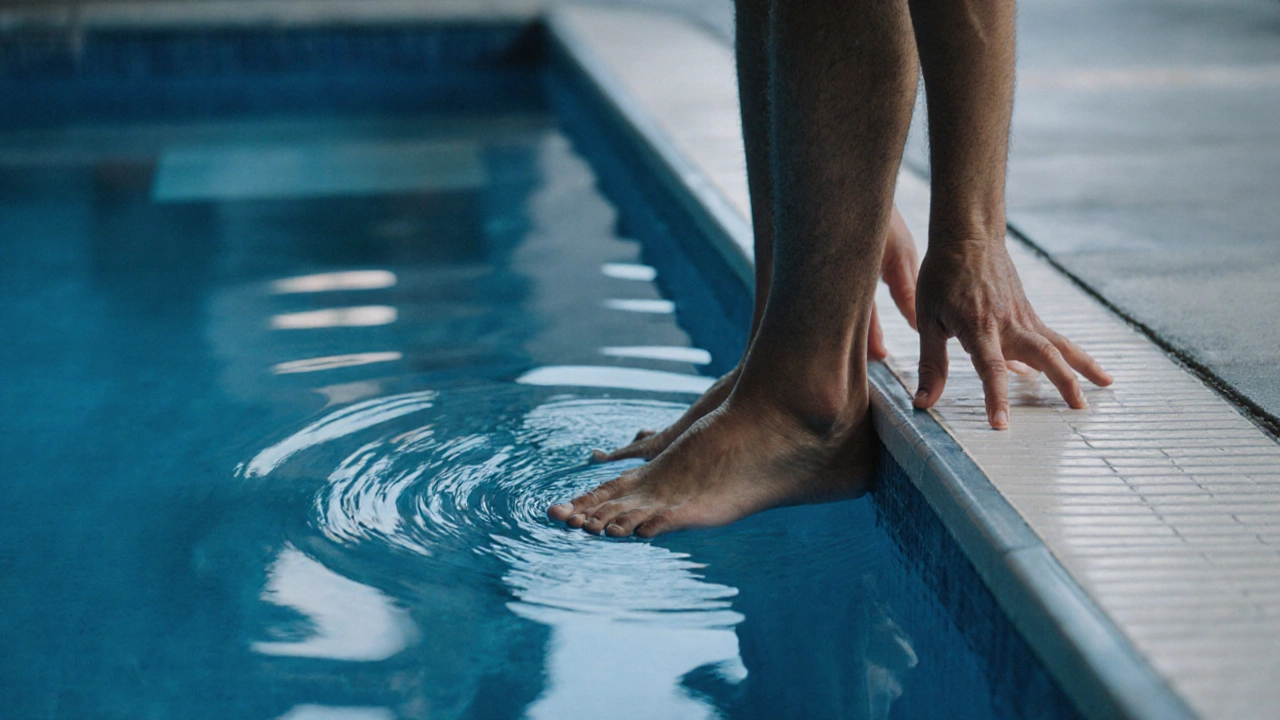Swimming Frequency Calculator
How Many Days a Week Should You Swim?
This tool helps you determine your optimal swimming practice frequency based on your current skill level, schedule constraints, and learning goals. For most beginners, 3 sessions per week provides the best balance of progress and recovery.
If you’ve ever stood at the edge of a pool, nervous and unsure whether to jump in, you’re not alone. Learning to swim isn’t just about technique-it’s about building confidence, one stroke at a time. But here’s the real question: how many days a week should you learn to swim? The answer isn’t one-size-fits-all, but there’s a clear, practical path that works for most people starting out.
Start with three days a week
Most beginners see the biggest leap in progress when they swim three times a week. That’s not because more is better-it’s because consistency beats intensity. Swimming uses muscles you don’t normally engage. Your shoulders, core, and hips need time to adapt. If you go every day right away, you’ll likely get sore, tired, or frustrated. Three days gives your body room to recover while keeping momentum.Think of it like learning to ride a bike. You wouldn’t expect to master it in one session. You’d want to hop on again a couple of days later, then again after that. Same with swimming. Three sessions a week-say, Monday, Wednesday, and Friday-give your brain and body time to remember what you learned. Muscle memory builds faster with spaced repetition than with cramming.
Why not two days?
Two days a week isn’t bad. If you’re juggling work, kids, or a busy schedule, it’s better than nothing. But here’s what happens: progress slows. You might spend half of each session relearning what you forgot from last time. That’s not failure-it’s just physics. Your nervous system needs frequent reinforcement to lock in new motor patterns. Two sessions leave too much time between them. You’ll feel like you’re always starting over.One real example: a 32-year-old teacher in Brisbane started swimming twice a week. After six weeks, she could float and kick on her back-but still couldn’t coordinate breathing with arm strokes. When she added a third session, everything clicked in under two weeks. The extra practice gave her brain the chance to connect the dots.
What about four or five days?
If you’re young, fit, and have no physical limitations, four or five days can accelerate your progress. But this isn’t for beginners. It’s for people who already know how to float, kick, and breathe without panicking. If you’re still struggling to put your face in the water, pushing for five days a week might lead to burnout-or worse, a fear of the pool.Swimming is different from running or lifting weights. Water creates resistance, and it’s harder to rest. You’re working against gravity, breathing on a strict rhythm, and coordinating four limbs at once. Overdoing it early can make you associate swimming with stress instead of freedom. That’s the opposite of what you want.

What should each session look like?
It’s not just about how often you swim-it’s about what you do each time. A good beginner session lasts 30 to 45 minutes. Here’s a simple structure:- 5 minutes: Walking in shallow water, getting used to the feeling of resistance.
- 10 minutes: Breathing drills-turning your head to breathe while holding onto the wall, then practicing with a kickboard.
- 15 minutes: Gliding and floating. Learn to relax in the water. This is the most important part. Fear comes from fighting the water, not from lack of skill.
- 10 minutes: Short laps with a focus on one thing-like keeping your arms long, or exhaling underwater.
You don’t need to swim 25 meters nonstop on day one. In fact, you shouldn’t. Focus on smooth, controlled movements. One clean stroke is worth ten frantic ones.
What if you miss a day?
Life happens. You get sick. Your kid has a fever. The pool closes for maintenance. Don’t panic. Missing one day doesn’t reset your progress. Missing two in a row? That’s when you start losing momentum. If you miss a session, don’t try to make it up the next day by doubling your effort. That’s how injuries and discouragement creep in. Just show up the next scheduled day. Consistency over perfection.When should you increase frequency?
Once you can swim 25 meters without stopping, breathe comfortably, and feel relaxed in the water, you’re ready to think about adding a fourth day. But only if you’re enjoying it. If swimming feels like a chore, stick with three. The goal isn’t to train like a swimmer-it’s to become someone who feels safe and confident in the water.Many adults never get past the beginner stage because they think they need to push harder. But the real milestone isn’t speed or distance. It’s this: you walk into the pool without anxiety. You jump in without hesitation. You leave feeling better than when you came in. That’s success.

What about lessons vs. self-practice?
If you’re serious about learning, take at least four private lessons. A good coach will spot tiny mistakes you can’t feel-like how you tilt your head when breathing, or how your legs sink because your hips are too low. After that, you can practice on your own. But don’t skip the lessons. They cut months off your learning curve.Group lessons work too, but only if the class size is small (under six people). Big groups mean you spend half your time waiting. That’s not practice-that’s standing around.
Seasonal changes matter
In Brisbane, summer is swimming season. But don’t wait until December to start. Winter is actually the best time to learn. Pools are quieter. Coaches have more time for you. The water’s cooler, so you’ll be more alert. And when summer comes, you’ll already be swimming confidently-while everyone else is still nervous.Final rule: Listen to your body and your mind
There’s no magic number. Three days works for most people. Two works if that’s all you can manage. Four works if you’re ready. But the real secret? Show up. Even if you only swim for 15 minutes. Even if you just practice breathing. Even if you’re scared. The water doesn’t care how fast you are. It only cares that you keep coming back.Swimming isn’t a race. It’s a gift you give yourself-the freedom to move through water without fear. And that starts with showing up, three days a week, and sticking with it.
Can I learn to swim in just one week?
It’s unlikely. Learning to swim well takes time. In one week, you might learn to float or kick with a board, but coordinating breathing, arm movement, and body position takes weeks of consistent practice. Most people need 4-8 weeks of regular lessons to swim 25 meters confidently.
Is it too late to learn to swim as an adult?
Not at all. Thousands of adults learn to swim every year-some in their 50s, 60s, and beyond. Age doesn’t matter. Fear and lack of practice do. With the right approach, anyone can learn. Many adult learners actually progress faster than kids because they’re more focused and less distracted.
Do I need to know how to tread water before learning strokes?
No. Treading water is a useful skill, but it’s not a prerequisite. Most beginner lessons focus on floating, breathing, and gliding first. Once you’re comfortable in the water, treading water comes naturally. Many people learn it alongside freestyle or backstroke.
What if I’m afraid of water?
Start by just sitting on the edge of the pool and dipping your toes. Then your ankles. Then your knees. Go slow. Focus on breathing. A good instructor will help you build trust in the water without pushing you too fast. Fear is normal-many top swimmers were once terrified. The key is patience, not courage.
Should I use floaties or kickboards?
Kickboards are fine for practicing leg movements, but avoid arm floaties. They keep your body in an unnatural position and teach you to rely on external support. Instead, use a noodle or just hold onto the wall. The goal is to learn balance in the water, not to hide from it.
